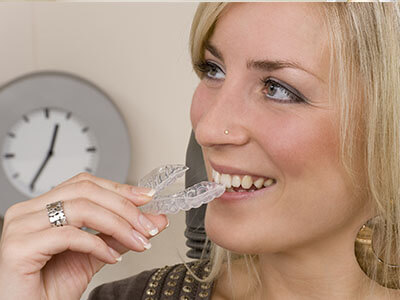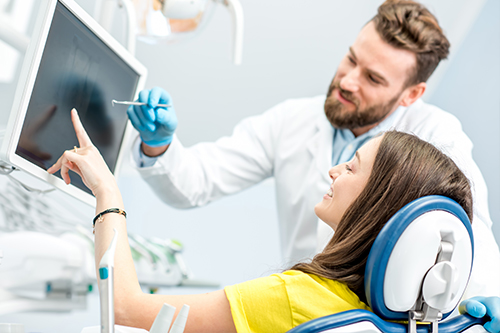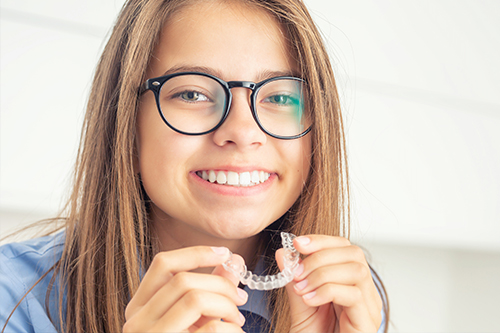Invisalign® offers a modern alternative to traditional braces: a discreet, removable system of clear aligners that moves teeth through a planned sequence of gentle adjustments. Designed to be unobtrusive and compatible with everyday life, aligner therapy allows many patients to pursue orthodontic improvements without the visual or social impact of metal brackets. The technology underlying these appliances focuses on predictability, comfort, and individualized control of tooth movement.
How aligners create predictable tooth movement
Treatment with clear aligners begins with precise digital records. A comprehensive scan or impression captures the current position of teeth, which is then used to model incremental movements. Specialized software maps a step-by-step plan that sequences how each tooth should shift to reach the intended outcome.
Each aligner in the series is fabricated to apply controlled forces to specific teeth. Rather than relying on brackets and wires to push or pull broadly, aligners exert calibrated pressure in targeted places, enabling nuanced movements like tipping, rotation, and intrusion when clinically appropriate. This staged approach helps maintain patient comfort while advancing the treatment predictably.
Because the plan is visualized in advance, clinicians can review and refine the proposed progression before any appliances are worn. That combination of planning and adjustability helps minimize surprises during treatment and supports a more efficient path to the final alignment.
With Invisalign® clear aligners, your treatment is tailored to you. Innovative technology combines with a
personalized treatment plan to make custom clear aligners for creating your new smile.
Who is a good match for aligner therapy
Aligners are versatile and often appropriate for adults and older teens who have finished most of their jaw growth. They can address a wide range of alignment issues—from mild crowding and spacing to moderate bite problems—by guiding teeth along a planned trajectory. Because treatment success depends on patient cooperation, candidates who can commit to wearing aligners for the recommended daily hours typically see the best results.
Certain complex movements may still require adjunctive measures or traditional orthodontic tools; however, many patients who once would have needed braces can now be treated effectively with clear aligners. An in-person evaluation determines which clinical approach will deliver the most reliable and stable outcome for each individual.
Beyond the clinical fit, aligners appeal to people who value oral hygiene and dietary flexibility during treatment, since the trays can be removed for brushing, flossing, and eating. This removable design often makes it easier to maintain gum and tooth health throughout the course of therapy.
What to expect during your treatment journey
The process begins with a consultation and digital scan that establish a baseline and allow your clinician to design a stepwise plan. Patients typically receive several sets of aligners at a time, each worn for a prescribed interval before progressing to the next in the series. Regular check-ins ensure the treatment is tracking as expected and allow for minor refinements if needed.
Most patients notice mild sensations of pressure when starting a new aligner—this is the sign that tooth movement is occurring. Any temporary changes in speech or minor soreness usually resolve quickly as you adapt. Oral hygiene remains straightforward because trays are removed for cleaning teeth and can be rinsed separately.
Compliance is central: aligners are most effective when worn according to the clinician’s recommendations. Retention after active treatment also plays a key role in preserving results, so expect a tailored plan for maintaining your new alignment once the active phase is complete.
Personalized planning from start to finish
Every course of aligner therapy begins with a customized plan that reflects the patient’s dental anatomy and aesthetic goals. Advanced imaging and software allow clinicians to model the entire sequence of movements, which helps set realistic expectations and timelines before treatment begins.
This individualized planning also enables clinicians to identify potential challenges—such as tooth rotations or the need for attachments—and incorporate solutions into the design. That foresight helps streamline care and reduces the need for unplanned interventions.
Because the treatment plan is shared and reviewed in advance, patients can see a projected outcome and discuss refinements with their provider. This collaborative review helps align clinical objectives with a patient’s priorities for function and appearance.
Comfort-focused fabrication and fit
Aligners are produced from smooth, medical-grade plastic that is custom formed to each patient’s teeth. That tailored fit helps reduce irritation to the cheeks and lips compared with traditional braces, and many patients find the transition to aligners more comfortable overall.
Where additional control is needed, small composite attachments may be placed on certain teeth to improve aligner grip and force direction. These attachments are tooth-colored and designed to be minimally noticeable while improving the efficiency of complex movements.
Clinicians also check fit at early appointments to confirm the aligners seat properly. Any adjustments—such as small trimming or softening—are completed chairside to enhance comfort without compromising treatment progress.
Practical daily routines that support success
Most patients wear aligners for the majority of each day, removing them only for meals and oral care. Establishing a simple routine—cleaning aligners nightly, brushing after meals, and keeping spare aligners on hand—helps maintain momentum and reduces interruptions to the treatment schedule.
Maintaining excellent oral hygiene throughout treatment preserves gum health and reduces the risk of complications. Because aligners are removable, cleaning access is significantly easier than with fixed appliances, and routine dental visits remain an important part of overall care.
When travel or busy schedules arise, planning ahead with an extra set of aligners or confirming check-in timing with your clinician helps keep treatment on track without unnecessary delays.
Ongoing support and predictable follow-up
Throughout aligner therapy, clinicians monitor progress and make evidence-based adjustments when necessary. These scheduled visits are opportunities to confirm fit, evaluate movement, and address any patient questions about comfort or care.
Because the treatment plan is mapped digitally, deviations from the expected path are often diagnosed early and corrected with targeted refinements. That active oversight contributes to a more predictable endpoint and helps protect long-term stability.
Once active alignment is complete, a retention strategy is established to preserve the result. This may include removable retainers or other options discussed with your clinician to maintain the new position of the teeth over time.
At Royal Dental Center in West Bloomfield, MI, we approach aligner therapy with a focus on clear communication, careful planning, and ongoing support so patients can pursue meaningful improvements in function and confidence. If you would like to learn more about whether clear aligners are a good option for your smile, please contact our office for additional information and to schedule a consultation.
*Invisalign® is a registered trademark of Align Technology, Inc.








